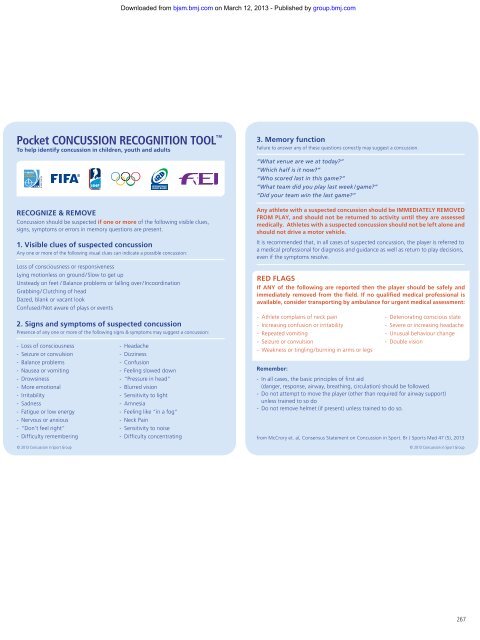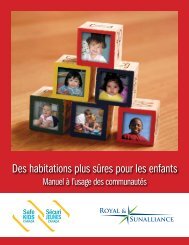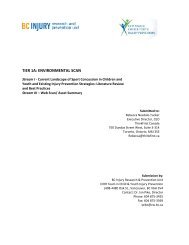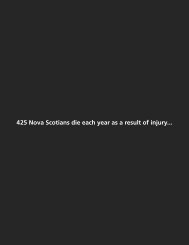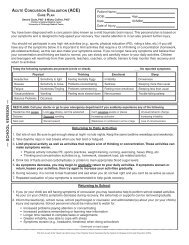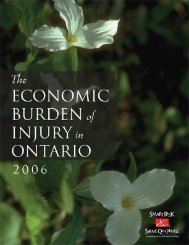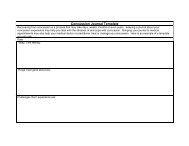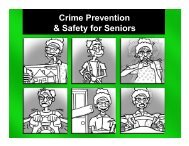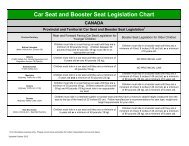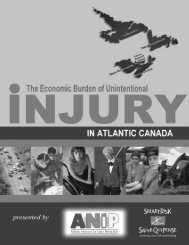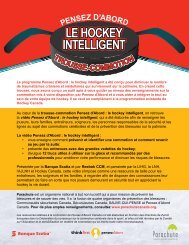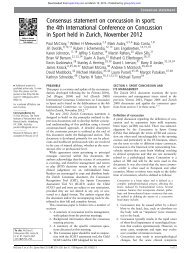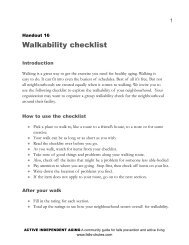Concussion Recognition Tool (CRT) - Think First
Concussion Recognition Tool (CRT) - Think First
Concussion Recognition Tool (CRT) - Think First
Create successful ePaper yourself
Turn your PDF publications into a flip-book with our unique Google optimized e-Paper software.
Downloaded from bjsm.bmj.com on March 12, 2013 - Published by group.bmj.comPocket CONCUSSION RECOGNITION TOOL To help identify concussion in children, youth and adults3. Memory functionFailure to answer any of these questions correctly may suggest a concussion.“What venue are we at today?”“Which half is it now?”“Who scored last in this game?”“What team did you play last week / game?”“Did your team win the last game?”RECOGNIZE & REMOVE<strong>Concussion</strong> should be suspected if one or more of the following visible clues,signs, symptoms or errors in memory questions are present.1. Visible clues of suspected concussionAny one or more of the following visual clues can indicate a possible concussion:Loss of consciousness or responsivenessLying motionless on ground / Slow to get upUnsteady on feet / Balance problems or falling over / IncoordinationGrabbing / Clutching of headDazed, blank or vacant lookConfused / Not aware of plays or events2. Signs and symptoms of suspected concussionPresence of any one or more of the following signs & symptoms may suggest a concussion:- Loss of consciousness- Headache- Seizure or convulsion - Dizziness- Balance problems - Confusion- Nausea or vomiting - Feeling slowed down- Drowsiness- “Pressure in head”- More emotional- Blurred vision- Irritability- Sensitivity to light- Sadness- Amnesia- Fatigue or low energy- Feeling like “in a fog“- Nervous or anxious- Neck Pain- “Don’t feel right” - Sensitivity to noise- Difficulty remembering - Difficulty concentrating© 2013 <strong>Concussion</strong> in Sport GroupAny athlete with a suspected concussion should be IMMEDIATELY REMOVEDFROM PLAY, and should not be returned to activity until they are assessedmedically. Athletes with a suspected concussion should not be left alone andshould not drive a motor vehicle.It is recommended that, in all cases of suspected concussion, the player is referred toa medical professional for diagnosis and guidance as well as return to play decisions,even if the symptoms resolve.RED FLAGSIf ANY of the following are reported then the player should be safely andimmediately removed from the field. If no qualified medical professional isavailable, consider transporting by ambulance for urgent medical assessment:- Athlete complains of neck pain- Increasing confusion or irritability- Repeated vomiting- Seizure or convulsion- Weakness or tingling / burning in arms or legsRemember:- Deteriorating conscious state- Severe or increasing headache- Unusual behaviour change- Double vision- In all cases, the basic principles of first aid(danger, response, airway, breathing, circulation) should be followed.- Do not attempt to move the player (other than required for airway support)unless trained to so do- Do not remove helmet (if present) unless trained to do so.from McCrory et. al, Consensus Statement on <strong>Concussion</strong> in Sport. Br J Sports Med 47 (5), 2013© 2013 <strong>Concussion</strong> in Sport Group267
Downloaded from bjsm.bmj.com on March 12, 2013 - Published by group.bmj.comPocket <strong>CRT</strong>Br J Sports Med 2013 47: 267Updated information and services can be found at:http://bjsm.bmj.com/content/47/5/267.citationEmail alertingserviceThese include:Receive free email alerts when new articles cite this article. Sign up inthe box at the top right corner of the online article.NotesTo request permissions go to:http://group.bmj.com/group/rights-licensing/permissionsTo order reprints go to:http://journals.bmj.com/cgi/reprintformTo subscribe to BMJ go to:http://group.bmj.com/subscribe/


